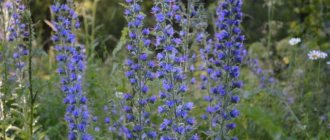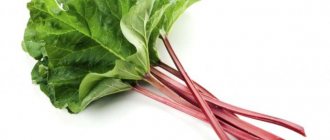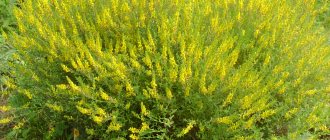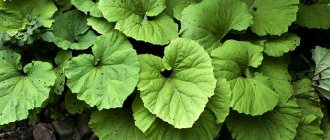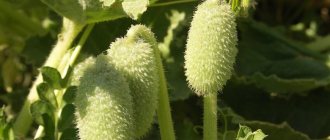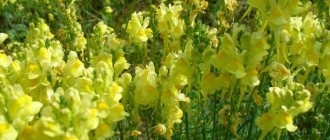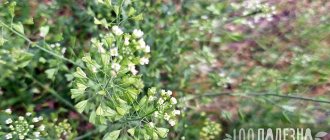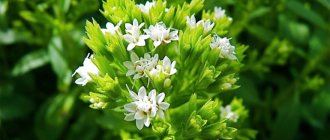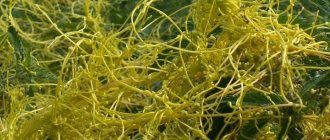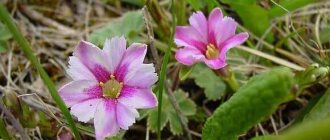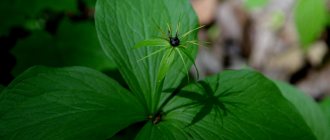Nutritional characteristics
It is customary to eat the pulp of momordica. But in traditional medicine recipes, you can use absolutely all its parts, including the peel, seeds and even “biting” leaves. They contain a whole complex of vitamins and minerals that are very beneficial for the human body.
- Proteins, carbohydrates and fats.
- Amino acids.
- Alkaloids.
- Vitamins A, B, E, C, and F.
- Mineral salts, phosphorus and calcium.
- Phenols, oils, resins, saponins.
- Folic and nicotinic acid.
- Charantine is a natural compound that helps reduce sugar concentration.
The use of momordica in folk treatment
In established Chinese medicine, Momordica is used to treat gastrointestinal problems and infectious diseases. Doctors studied the composition of the plant and found in it unique substances that are considered antioxidants and have antiviral effects.
In addition, the antiseptic properties of the plant are used in the treatment of: skin rashes, eczema, psoriasis, gastritis; diseases of the genitourinary system, heart diseases.
The active substances of momordica have a detrimental effect on streptococcus and staphylococcus; consuming the fruit extract helps strengthen the immune system and resist HIV.
Momordica has long been used not only in oriental medicine, but also in folk medicine of the indigenous peoples of South America, where a decoction is prepared from it: a bag of dried and crushed momordica is poured with a glass of water and left for 5 minutes, after which the decoction is consumed on an empty stomach. A few glasses of this drink a day will help get rid of headaches, strengthen the body, and improve the condition of the nervous system.
This is truly an amazing product, because all its components (fruit, leaves, roots, seeds, flowers) are used not only in cooking, medicine, but also in cosmetic care. The fruits and seeds of the plant prevent the formation of cholesterol plaques, alleviate the symptoms of rheumatoid arthritis; drinks from the root of momordica are recommended for use for depression.
Decoctions and tinctures of the plant are used as prophylaxis against prostatitis, kidney stones and sclerosis. For women, momordica will be useful for painful periods, endocrine pathologies, and excess weight.
Momordica is often used as a pain reliever; this fruit can help people who have heart disease, suffer from thinness and fragility of blood vessels, hypertension, and atherosclerosis.
Momordica root is used in some countries as a libido enhancer, and Indian cucumber seeds fight swelling and help remove excess water. Doctors also value momordica leaves for its unique properties.
Culinary properties
For salads and first courses, it is possible to use leaves and young shoots of the plant. The fruits themselves are consumed slightly greenish, while they still do not have the characteristic bitterness of ripened momordicas. But their seeds are suitable for consumption only when ripe.
The seeds of ripe fruits have a sweetish taste and are suitable for use in culinary dishes and on their own. The pulp is used in vegetable and meat side dishes. It is tasty stewed and boiled, it can also be pickled and canned. The fruits are even used to make jam, liqueurs, liqueurs, and wines.
Seeds with a high content of essential oils are used as an aromatic seasoning for various dishes, in baked goods and confectionery.
Indian pomegranate is always present in the popular Indian curry seasoning. Many interesting and unusual dishes can be prepared from momordica. If you want to please your family and surprise your guests, original recipes will come to the rescue.
Momordica: beneficial properties
Enlarge image
The beneficial properties of momordica can hardly be overestimated. It seems that all diseases are subject to this strange fruit. Main properties of the drug:
- activates brain activity;
- cleanses blood vessels and strengthens them;
- improves visual acuity;
- helps in the fight against bacteria and viruses;
- stops the aging process of the body;
- helps normalize kidney function;
- lowers cholesterol levels;
- supports joint health;
- strengthens the heart;
- has an anthelmintic effect.
The medicinal properties are officially recognized by traditional medicine; using modern technologies, various medical preparations are made from momordica .
Stuffed momordica
Cut the fruits in half and scrape out the pulp. Lightly boil the rice and add minced pork and beef. Use your favorite seasonings to taste; thyme, tarragon, cumin are best. Stuff the prepared fruits with minced meat, rice and seasonings.
Place them in a container suitable for stewing. Pour water (you can use broth) to the level of the contents of the container, add salt and pepper. Simmer over low heat for about 35 minutes until tender. Instead of water, you can use liquid cream or low-fat sour cream.
You can also bake stuffed momordiki in the oven by cutting it crosswise or lengthwise.
Diabetes help
The medicinal properties of momordica against diabetes have been proven, but you should not independently decide to give up traditional medications, in particular insulin, focusing only on the benefits of the plant substance. It is possible that during therapy the dependence on artificially administered insulin will decrease, but the endocrinologist must make a conclusion about changing the dosage of the drug.
To alleviate diabetes, tea is brewed from momordica greens. Half a tablespoon of finely chopped leaves is boiled with 250 ml of boiling water and allowed to brew until the drink stops burning. You can drink 1-2 cups of healing tea a day, but adding sweeteners or adding lemon is not recommended.
Pickled momordica
Momordica should be washed and cut into slices. Place them in a non-metallic container. Add currant leaves, a couple of cloves of garlic, several branches of dill, allspice black pepper to the momordica slices.
Prepare the marinade: stir a tablespoon of salt and a tablespoon of sugar in a liter of water, add half a glass of natural apple or wine vinegar. Pour the marinade into a stainless steel or enamel pan, bring to a boil and pour over the fruit. The dish is ready to eat after two days. Perfect as an appetizer for a holiday table.
Thus, you can prepare momordica for a long shelf life by first sterilizing the jars.
In addition to stewing and pickling, you can prepare a huge variety of simple and very unusual dishes with Indian pomegranate. By adding momordica, pre-fried, to your usual scrambled eggs, you can have a quick and healthy breakfast, while receiving a charge of energy and positivity for the whole day.
The use of momordica in cosmetology
Extract from fruits and leaves smoothes wrinkles, increases skin elasticity and tone. Since the leaves of this Indian cucumber have antibacterial properties, they are applied to wounds and rashes.
In modern cosmetology, momordica is used as cleansing lotions and facial tonics. Rinsing your hair with momordica-based products strengthens it, making it stronger and shinier.
Do not forget that, like any medicinal plant, Indian cucumber can have both benefits and harm.
Medicinal properties
Traditional medicine has long recognized this plant. Therefore, based on it, a large number of medical products are produced using the latest technologies. Mostly these drugs are homeopathic.
Chinese healers have been using the properties of momordica for a long time, using it as an antiseptic and immunomodulatory substance.
- It treats infectious diseases of the gastrointestinal tract, colds and viral diseases that affect the upper respiratory tract.
- This plant is quite rightly included in the list of those drugs that help strengthen the immune system.
- The indigenous population of America used momordica to cure measles, scabies, and hepatitis.
- Due to its properties, it is in demand when bitten by a snake or harmful insect.
- Momordica is also used to fight internal parasitic worms (worms).
- It is useful for those who suffer from asthma, arthritis, leukemia and even oncology.
- Eating fruits and seeds helps remove cholesterol, cleanse the circulatory system, and prevent heart attack and stroke.
- The healing capabilities of Indian pomegranate will help improve or restore vision, cure psoriasis, kidney and liver pathologies, and restore male strength.
- The leaves and fruits of the plant contain an extremely useful and rare substance - charantin. The pancreas, whose cells produce insulin, needs it. It is for them that charantin is of great importance.
- The amazing healing properties of momordica have a positive effect on the endocrine system. Its use helps normalize blood sugar levels, which is extremely important for people who suffer from diabetes.
Momordica in the pharmacy - the drug "Momordica Compositum"
Based on the ripe fruits of the vines, the medicinal drug “Momordica Compositum” is produced. The drug is administered intramuscularly, intravenously for diseases of the pancreas, all forms of pancreatitis. The price of the medicine is from 850 rubles.
Article for you:
Rose hips - medicinal properties and contraindications, how to brew correctly and how to drink
The drug has only one contraindication – individual intolerance. For diseases of the thyroid gland, use the medicine carefully, after preliminary medical consultation. Pregnant women should also undergo treatment with the appointment of a specialist.
The duration of the course of treatment should not exceed one and a half months. Continue treatment in the absence of positive dynamics only as prescribed by a doctor.
Preparation of healing infusion
To prepare a medicinal tincture, you need to take the fruits of momordica. Separate the fruit pulp from the peel, chop into cubes and place in a large non-metallic container with a volume of about three liters.
Then pour about 500 ml of vodka into the bowl; it should completely cover the contents of the container. Cover the infusion with a tight lid and leave in the refrigerator for two weeks. You need to consume Mamordica tincture 30 minutes before meals, 1 tsp. three times a day.
This remedy is taken for colds and infectious diseases to increase the body's defenses. The positive effect of such a drink is important for rheumatism, as well as other inflammations.
The use of momordica in cooking
Bitter gourd is used in various Asian and Amazonian dishes. It perfectly complements meat, vegetables, and goes great with yogurt. Its leaves and flowers are added to prepared dishes instead of spices, as they add an interesting and piquant flavor. A stew made from vegetables, beans and momordica pulp turns out very tasty.
Jam is also made from the pulp. The syrup of this delicacy is used to create liqueurs, wines and tinctures. Try fried momordica; perhaps, if you are a lover of exotic food, you will like it.
Eating momordica dishes improves immunity, relieves pain, speeds up metabolism, due to which toxins are eliminated faster and excess fat deposits are removed. Momordica is credited with a number of beneficial properties, including the treatment of serious cancer.
Recipes for tinctures, strengthening mixtures, water infusions
To treat colds, rheumatic symptoms and other joint pain, psoriasis, and heart disease, alcohol tincture of momordica is often used. To prepare it, take 2-3 fruits without seeds, chop them, put them in a liter jar and fill them with vodka, let them brew for a couple of weeks. Take a teaspoon three times a day before meals. The product helps strengthen the immune system, has an anti-inflammatory effect, normalizes blood circulation and general metabolism, lowers cholesterol levels, and can increase a person’s active life.
Momordica tincture will also be useful for diabetes mellitus, as it promotes the production of insulin by the pancreas.
A mixture of twisted plant fruits, walnuts and honey also strengthens the immune system Take a tablespoon three times a day for 7-10 days, preferably during the period when colds begin to grow.
An infusion of momordica leaves , useful for diabetes, is prepared as follows: pour boiling water over crushed, washed leaves (1-2), let it brew, drink as tea 2-3 times a day, it is better not to add other ingredients to the infusion.
If you simmer such an infusion for 40 minutes in a water bath, strain and add to the original volume, then it will be useful for lotions in the treatment of dermatitis, eczema, and psoriasis.
A decoction of momordica seeds will act as a diuretic and diaphoretic for acute inflammatory viral and bacterial infections - pour boiling water over a tablespoon of seeds, keep on low heat for a quarter of an hour, let it brew for 60 minutes and drink 50 ml three times a day. Usually take 5-7 days before the temperature drops.
Preparation of a healing decoction
To make a medicinal decoction of momordica, you need to take 20-25 seeds. They need to be crushed. You can do this by hand or using a blender. Pour 300 ml of water into a small saucepan and put on fire.
After the water boils, add the previously prepared raw materials to it and simmer over low heat for 10 minutes after boiling. Next, cover with a lid and leave for about 1 hour. Take a decoction of 50 ml 3-4 times a day.
This remedy is extremely effective as a diuretic. It is indicated for use to reduce body temperature and relieve swelling.
Momordica leaves in the form of tinctures and decoctions are used for cosmetic purposes for facial skin. They have a rejuvenating, tonic, antiseptic effect. After using this product, the skin acquires firmness, elasticity, and freshness. Pores narrow and become less noticeable, the face looks rested and velvety.
Taking vitamin-rich infusions internally enriches the body with nutrients. The condition of hair and nails improves, and dental health is maintained.
The fruits have low calorie content and decent taste with a composition that is maximally saturated with useful and necessary substances. There are only about 20 calories in 100 grams of product. Therefore, it is recommended to include it in the diet of people who want to lose excess weight.
Treatment of psoriasis with a decoction of seeds
A decoction of momordica seeds is an effective medicine for psoriasis. The home remedy is recommended to be used internally and externally at the same time.
Active elements act in several directions at once - relieve itching, pain, peeling, inflammatory processes, remove redness of the skin, and even out the tone of the dermis. Preparation:
- Grind 20 momordica seeds (use a coffee grinder).
- Pour boiling water over the plant mass (a glass is enough).
- Stirring, simmer over low heat for 10 minutes.
- After removing, wait half an hour and strain.
Drink the prepared decoction twice a day, dosage – 50-70 ml. It is advisable to use the composition after meals. The duration of traditional treatment is three weeks. Do not prepare the decoction for future use - brew fresh seeds each time.
Apply compresses daily before bed. Soak a soft cloth in the heated broth, place it on the affected area of the dermis, and leave for half an hour. It is not recommended to rinse the skin after the procedure - the effectiveness of treatment will be significantly reduced.
Article for you:
Sea buckthorn: beneficial properties and contraindications
Contraindications
Despite the extreme usefulness of momordica, it still should not be abused so as not to cause harm. If you eat a lot of this fruit, you can develop unpleasant symptoms similar to poisoning: dizziness, weakness and nausea.
The composition of Indian pomegranates, rich in vitamins and microelements, may not be useful for everyone. With the exception of people who have individual allergic reactions, momordica should be consumed with extreme caution:
- Pregnant and lactating women.
- Children under 3 years of age and older.
- People suffering from gastrointestinal diseases.
- For those who have previously experienced individual allergic reactions to exotic fruits.
Growing momordica from seeds
In our country, momordica is considered exotic, although it appears in garden plots more and more often. Our gardeners are showing more and more interest in it, and everyone has their own interest: some like its decorative qualities, some highly appreciate the delicious fruits, and others see only a medicinal plant in momordica.
Momordica is called as many different names as Indian cucumber, crazy pumpkin, Chinese melon, Indian pomegranate, balsamic pear, etc. In this article we will tell you about growing momordica from seeds, when to plant, how to propagate and give recommendations for care.
They say that ordinary residents of Ancient China were forbidden to eat this plant; only the emperor and members of the imperial family had this right. Hindus revere momordica as the plant of the gods, the Japanese call it the plant of long-livers. In Russia, this balsamic pear can be found on the shelves of Korean stores.
Although Russian gardeners prefer to grow this exotic plant in their gardens themselves, considering this activity interesting and educational. In our vegetable gardens and orchards, two main varieties of momordica are grown: Indian pomegranate, or momordica charantia, and momordica balsamic or balsam pear.
Plant characteristics
There are many other names for momordica, which the exotic climbing plant received due to its unusual taste and appearance: Indian pomegranate, mad melon, yellow cucumber, bitter gourd, balsamic pear, crocodile cucumber.
There are 20 known species of this family (pumpkin). The most common: Momordica charantia, Momordica cochinchinensis.
It has unusual carved leaves, fragrant flowers, bright orange fruits that also resemble flowers. The stem reaches a length of 4 meters. Momordica blooms during the period of active shoot formation. First, a male flower appears, then a female one, which is slightly smaller in size. The flowers are located on long stalks and have a jasmine scent.
It resembles the shape of an oblong or round pumpkin, covered with nipple-like bumps similar to warts. The unripe momordica is green and turns orange when ripe.
Due to its close relationship with the garden crop, momordica is otherwise called the “Indian cucumber,” but this is only one name out of many, among which the term “biting fruit” is most widespread. This definition is not entirely correct, since it is not the fruit itself that “bites”, but its jagged, velvety leaves, which are similar to our nettles in their “stinging” properties.
The rich, pomegranate-looking pericarp of momordica is exposed when the fruit is fully ripe and cracks into three equal lobes. At the same time, up to three dozen flat seeds, painted with ornate patterns, fall out of the amniotic part - very fragrant and reminiscent of persimmon in taste.
“Biteer” grows throughout India, China, and the Indonesian islands; you can find it in South America and even on the Philippine Islands. Not long ago, Crimean amateurs began growing oriental cucumbers, and not without success.
Momordica is a member of the Cucurbitaceae family. It is represented by more than 20 species, including annual and perennial vines. As a cultivated species, Momordica charantia is most often bred.
The natural habitat of this vine is India and Southeast Asia. The difference between this vine and other representatives of the species lies in its thin and long stems, reaching a height of more than two meters. In addition, its light green, carved leaves are larger in size.
Momordica begins to bloom simultaneously with the beginning of the active growing season. It blooms with bright, yellow flowers. Dioecious flowers have long stalks, female flowers have shorter stalks, and the flowers themselves are smaller. The male ones begin to bloom first, releasing a very pleasant aroma, similar to the aroma of jasmine. Before ripening, the plant is covered with fine hairs that sting like nettles. As the hairs mature, they fall off.
The fruits set after pollination develop very quickly. They are shaped like cucumbers covered with crocodile skin. They are quite long, up to 20 centimeters in length, slightly oval in shape with a sharp end, and about 7 centimeters in diameter. As the fruit ripens, it turns yellow or yellow-orange in color.
The fruits look very decorative; the owners of the plots specially plant such exotic fruits near the gazebos or along the fence.
All parts of momordica are edible, from fruits and seeds to leaves and young shoots. Moreover, they have a lot of useful and even medicinal properties.
When the fruit is finally ripe, it cracks at the bottom and immediately begins to resemble a flower with thick petals that curl upward. When the fruit bursts, the seeds scatter on the ground. Each “cucumber” contains almost 30 seeds, reminiscent of pomegranate seeds. The fruits themselves are very juicy, rich pomegranate color, pleasant to the taste, with a subtle bitterness.
How to grow momordica seedlings
Momordica grows both in a greenhouse and in open ground, and even on a balcony or windowsill in an apartment. Growing an Indian cucumber will not be difficult; even a beginner in gardening can easily cope with it. Since momordica is a heat-loving plant, it is better to grow it through seedlings:
- The second half of April is the time to sow momordica seedlings. Before planting, the seeds must be disinfected in a weak solution of manganese for 20-30 minutes.
- For better germination, it is better to slightly file the hard shell of the seeds using a manicure file and being careful not to damage the nucleolus.
- Place the seeds in damp gauze, folded in several layers, place the plate with the gauze in a warm and bright place, remembering to keep the gauze moist.
- In a couple of weeks the seeds will take root. They should be planted in separate containers; plastic cups, cut-off juice bags, or, best of all, peat pots are suitable for this (like all pumpkin plants, momordica has sensitive roots, so it is better to plant it in the ground directly in a peat cup).
- Containers for seedlings need to be filled with the following composition: one half - garden soil, good humus, peat; the second half is sand.
- Place the sprouted seed on its edge in a container, deepening it a couple of centimeters, sprinkle with soil and water. You can stretch the film over the containers to speed up germination. After emergence, remove the film and place the containers with seedlings in a cooler and well-lit place.
- Seedlings should be fed weekly (superphosphate and potassium sulfate - weak solution). Fertilizers for indoor flowers are also suitable. Nitrogen fertilizing is not worth doing yet.
- Planting at a permanent location occurs in the third ten days of May, when consistently warm weather sets in. At this time, the momordica sprout should reach a quarter of a meter in height. If the weather has not yet settled and there is a possibility of frost, then the seedlings are transplanted into large containers and placed in a greenhouse.
Where to buy momordica and how to use it
The modern pharmaceutical industry of some foreign countries produces several drugs based on momordica for psoriasis, flu, and colds. This plant is not used in official medicine of the Russian Federation; its preparations are not included in the State Pharmacopoeia of the Russian Federation.
You can buy drugs based on momordica in pharmacies, most often in Chinese and Tibetan medicine pharmacies.
Available in the following preparations:
- Hepel;
- Heparus chelidonium;
- Homaccord;
- Momordica compositum.
Momordica in tablets (“Vietnamese hack”). This bioactive supplement is used to treat cancer, the cardiovascular system, and to improve immunity. Destroys bacteria, viruses, is effective against hypertension, hemorrhoids. Take 3 tablets with meals in the morning and evening. Course 1-2 months.
Kugua capsules to lower blood sugar levels. Contains momordica, polypeptides, carotene, betacarotene, pueraria root, onion extract, plantain.
Drink 2 capsules twice a day to normalize sugar and cholesterol levels, treat the heart and blood vessels, obesity, restore the activity of the endocrine glands, and for fatigue and depression.
Capsules "Momordica and ginseng". Designed to normalize sugar, improve health, and improve immunity.
Momordica tea. Vietnamese tea to stimulate insulin production and glucose utilization. Relieves headaches, stabilizes blood pressure, cleanses blood vessels, improves the functioning of the gastrointestinal tract. Brew 2-3 bags per day for a month.
In pharmacies you can buy dry momordica extract, a loose powder with a faint aroma. Used to improve immunity, reduce sugar, cholesterol. Indicated for asthma, diabetes, hepatitis. Drink in a 5% solution.
Eating momordica depends on the purpose for which it is decided to be used. The pulp of the plant is used unripe, so it tastes like cucumbers. After ripening, the fruits become soft, but bitterness appears in them. To neutralize the bitterness, it is recommended to boil the fruits in salted water.
After this, the fruits are used as a spice for cooking legumes. But momordica seeds have a sweet taste, but they are also quite hard. To make them softer, it is necessary to carry out heat treatment, most often this is done by frying.
In the cuisine of Asian countries, momordica seeds are an indispensable ingredient in various salads and in the preparation of stews.
Momordica has a very high nutritional value, being a more nutritious food than peppers or eggplants. At the same time, it is a low-calorie product. There are only 20 kcal per hundred grams.
Source
Growing in a greenhouse or on a balcony
In principle, it can stay there for the entire summer season; the heat-loving plant will only be grateful for such care. Then you should take care of the trellis in order to carefully tie up the main stems of the vine; the lighter branches will catch on the support with their tendrils on their own.
To grow momordica in a greenhouse, on a balcony or on a windowsill, you need to monitor the lateral shoots and trim them in time, otherwise the crown will thicken greatly and the fruits will be very small.
By the way, in such conditions a problem with pollination may arise, because in the apartment there are practically no insects necessary for pollinating flowers. Therefore, you need to help the plant, using a brush or cotton swab, transfer pollen from the male flower to the female one. On open land, this operation is not necessary, since pollinating insects clearly know their job.
Growing in open ground
There is nothing difficult in caring for a momordica. The main thing is that her living conditions should be similar to the nature of her native places, that is, that it should be warm (at least 20-22 ° C), light (lack of lighting entails problems with fruit set, and if they set, they may suddenly fall), humid and without sudden temperature changes.
Despite the fact that momordica loves moisture, it does not tolerate stagnation of water in the soil, since the delicate roots can rot very quickly, so good drainage is so important when planting, and when growing, regular watering, little by little.
The best place to plant momordica is fertilized loam with almost zero acidity. When preparing to plant vines, you need to dig up or loosen the soil along with a solution of mullein or urea.
In order for the plant to develop well and correctly, the root collar should not be too deep when planting. Seedlings should be planted no closer than 0.8 m from each other. After planting, you need to water the planted seedlings generously and lightly shade them from bright sunlight for the first few days.
